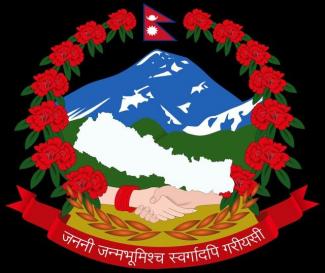Nepal: Political Misfortune Continues in the Himalayan Nation
The well-being of a nation depends much on its ability to adapt to changes. Each change brings in new possibilities and also critical risks. Nepal as a nation has witnessed many changes as early as 1950. The most notable change that has happened to Nepal in recent times is the abolition of 239 years of monarchy and the subsequent resolution by the Constituent Assembly for a ‘Federal, Democratic, Republic Nepal’. All the major political parties—the Communist Party of Nepal-Maoist (CPN-M), Nepali Congress (NC) and Communist Party of Nepal -Unified Marxist Leninist (CPN-UML)—hailed the decision as a great step forward. The declaration brought new hopes in the minds of ordinary Nepalese. Since then, five years have passed, but Nepal has not moved a step forward since then.
The mandate of the Constituent Assembly (CA) was to prepare a new constitution. Despite several term extensions, the CA finally dissolved on 27 May 2012 without promulgating the much-awaited ‘new Constitution’. Undoubtedly, the dissolved CA had to deal with many contentious issues. The two most difficult issues among them were—integration of People’s Libertion Army (PLA) combatants in the Nepal Army (NA) and restructuring of the state on lingual, cultural, ethnic and geographic basis. Another bone of contention was, of course, the form of the future government.
The CA, in its first meeting on 27 May 2008, fixed a time frame of two years, but not being able to prepare the constitution within the time frame, it sought an extension, and finally, its tenure was extended by one year. The CA term was extended a second time by another three months on 28 May 2011 and again on 31 August 2011 by another three months. The fourth and final six-month extension for the CA was made on 25 November 2011, which was over on 25 May 2012. The Supreme Court of Nepal, on 24 May 2012, made a significant decision to disallow any further extension for the CA. Nepal plunged into a new political and constitutional crisis after Prime Minister Baburam Bhattarai dissolved the country’s CA on 27 May, declared himself head of a caretaker government, and announced elections for 22 November 2012. However, the elections were not held for several reasons, and crucial among them was the refusal of other political parties to contest under the Maoist-led caretaker government. The seventh deadline by President Ram Baran Yadav to political parties for the conduct of the election expired on 09 January, with no consensus reached among the parties. The caretaker Maoist-led government has now called for elections in May 2013, however it remains to be seen whether they will be held during that time period.
As things stand today, Nepal is governed by no constitution or parliament. Of course, the interim constitution of January 2007 remains the only guideline and needs to be amended for the fresh election. Most of the Constitutional posts are lying vacant. The opposition has so far rejected any agreement with the government unless Baburam Bhattarai steps down from the PM position, which he has refused to do. On the other hand, the caretaker government seems to be not following any positive agenda to end the current crisis. The government has yet to initiate the process of the updating of voter cards. It has not even moved to submit an ordinance to the President asking for fresh elections since the Interim Constitution does not provide for the same. It’s a difficult situation altogether.
How to get out of this situation? Nepali leadership must have some way and test of wisdom and courage to break the current political and constitutional standoff. It’s high time that the three major parties, namely, the UCPN (Maoist) party, the Nepali Congress (NC) and the Communist Party of Nepal (UML), as well as the Madhesi Morcha, in consultation with the smaller parties, make an early decision on whether to hold elections to a new assembly and when or whether to revive the lapsed Constituent Assembly. Further, it is for all to acknowledge the changed political landscape to include the marginalised or rather ignored groups like Tharus, Dalits, Muslims and women, as well as upper-caste groups and pro-Hindu monarchists in the political process. Responsibilities lie with everyone now, including the President, the ruling and the opposition parties and the civil society. International players do have a role to play in the current Nepal crisis. So far, India has been following its classic foreign policy posture of non – non-intervention, but the same can’t be said about China.
Lack of political will has been the primary cause of Nepal's current politico-legal–constitutional stalemate. The last CA failed because all actors indulged in settling their scores, and in the process, everybody forgot the primary objective of the CA was to draft a Constitution for the governance of the country. The need of the hour is to reflect the cooperative side of politics and deal with complex issues of nationalism, nationality, nation, restructuring of the state, type of government, fundamental rights, sharing of natural resources, kind of judiciary and foreign and national security policy, and above all redefining Nepal.
